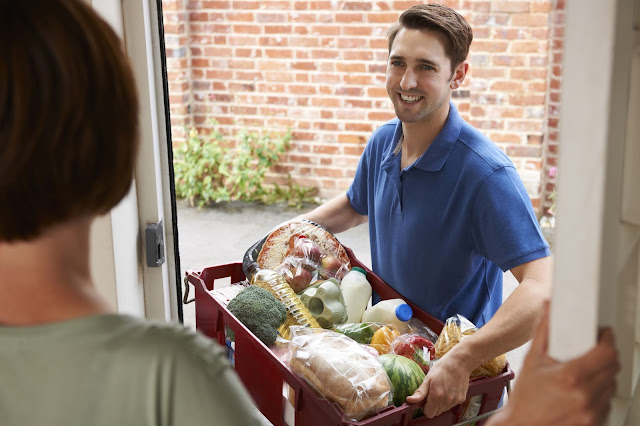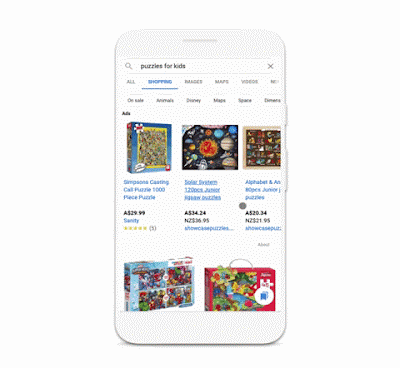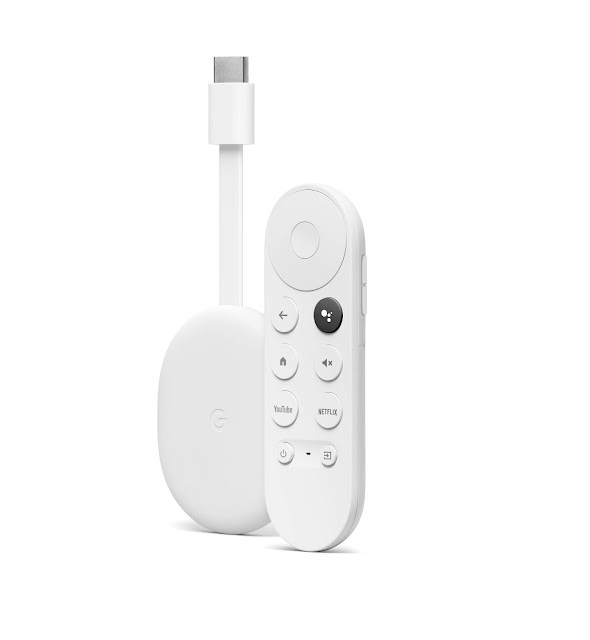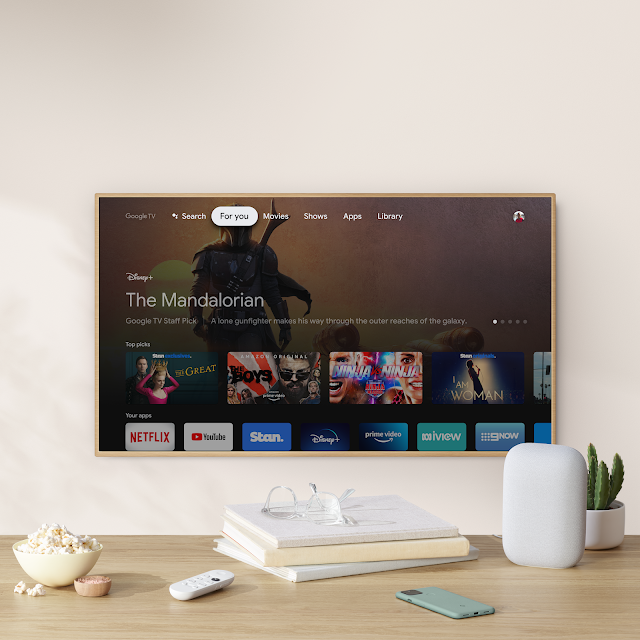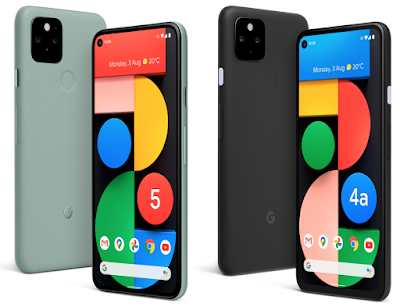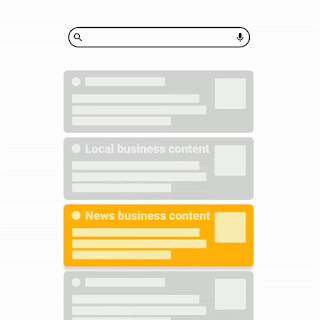Tag Archives: Australia
Helping Australian retailers and shoppers
- Between March and August 2020, more than 900,000 new households shopped online for the first time. That’s 35.4% more than the same period in 2019. (2)
- 68 percent of online shoppers believe they will increase the number of online purchases after the crisis. (3)
Source: Official Google Australia Blog
Our best Chromecast yet, now with Google TV
Source: Official Google Australia Blog
Made for music, the new Nest Audio is here
Source: Official Google Australia Blog
Pixel 4a (5G) and Pixel 5 pack 5G speeds and so much more
- Better videos with Cinematic Pan: Pixel 4a with 5G and Pixel 5 come with Cinematic Pan, which gives your videos a professional look with ultrasmooth panning that’s inspired by the equipment Hollywood directors use.
- Night Sight in Portrait Mode: Night Sight currently gives you the ability to capture amazing low-light photos—and even the Milky Way with astrophotography. Now, these phones bring the power of Night Sight into Portrait Mode to capture beautifully blurred backgrounds in Portraits even in extremely low light.
- Portrait Light: Portrait Mode on the Pixel 4a with 5G and Pixel 5 lets you capture beautiful portraits that focus on your subject as the background fades into an artful blur. If the lighting isn’t right, your Pixel can drop in extra light to illuminate your subjects.
- Ultrawide lens for ultra awesome shots: With an ultrawide lens alongside the standard rear camera, you’ll be able to capture the whole scene. And thanks to Google’s software magic, the latest Pixels still get our Super Res Zoom. So whether you’re zooming in or zooming out, you get sharp details and breathtaking images.
- New editor in Google Photos: Even after you’ve captured your portrait, Google Photos can help you add studio-quality light to your portraits of people with Portrait Light, in the new, more helpful Google Photos editor.
Source: Official Google Australia Blog
Australia’s media code won’t allow fair negotiations
Over the past month, we’ve outlined our concerns with Australia’s draft News Media Bargaining Code: a new proposed law that would impact the way Australians use Google Search and YouTube. We don’t oppose a code governing the relationship between news businesses and digital platforms—but right now the way the law is drafted isn’t fair or workable.
Last week, we proposed changes to help move us forward. Today, we want to go into more detail about one of our biggest concerns—the highly unusual, largely untested, one-sided arbitration system that would determine commercial arrangements between Google and news companies.
Here are the issues.
Unprecedented in Australia
The system being proposed is called ‘binding final-offer arbitration’, referred to in the United States as ‘baseball arbitration’. It isn’t used in any of the eight other mandatory codes in Australia. In fact, without the two parties’ consent, it’s never been used in Australian law before.
In a standard negotiation, two parties negotiate a price for a product or service after assessing its market value and the value each side provides the other. If the parties can’t reach an agreement, they might ask a mediator or arbitrator to decide on what’s fair.
In baseball arbitration, if the two sides can’t reach an agreement, each puts forward a single final offer and the arbitrator picks one, guided by set criteria.
Unreasonable claims
This system is usually put in place if there’s not much dispute over the value of the product or service being discussed and the parties are already close in price. But with the media code, some of the amounts being suggested by news businesses about how much we should pay to provide links to their stories defy commercial reality.
One news business has already claimed digital platforms should pay $1 billion every year, despite the fact that only 1 percent of all searches by Australians last year were seeking news—equating to around $10 million dollars in revenue (not profit).
Clearly, both sides have very different ideas of what the prices should be—and asking the arbitrator to pick a ‘final offer’ is an extreme way of resolving that. The reality is that baseball arbitration often fails and doesn’t produce quick outcomes. Independent economists have raised questions about its effectiveness here.
The results are also unpredictable, and no business can operate with that level of uncertainty.
The playing field is not level
The fundamental idea of baseball arbitration is that both sides present their evidence— like the player’s contribution, the team’s recent performance and comparable salaries—and the arbitrator decides the appropriate offer.
But the draft code doesn’t provide a level playing field.
As it stands, the arbitrator isn’t required to consider the value Google provides to news media businesses in the form of traffic to their websites, which in 2018 was estimated at more than $200 million per year.
Not only is that unfair—it goes against what the Australian Competition and Consumer Commission (ACCC) itself said should happen when it was preparing the code: “Negotiations around compensation for the use of news should also take into account the value that Google and Facebook already provide to news media businesses for using their news content.”
News media businesses can also make enormous financial demands of Google based on the vague and flawed concept of the ‘indirect’ value that news content provides (our data shows that the direct value of news to Google is negligible). Even the ACCC itself hasn’t been able to put a number on the indirect value of news, after several years of inquiry.
When the playing field is set up to favor one side, then that side is encouraged to make ambit, or exaggerated, claims.
A question of costs
But that’s not the only one-sided rule here.
The draft code also says the arbitrator should consider news businesses’ production costs — but not Google’s.
Again, that’s a significant amount of money, givenwe invest $1 billion each year in Australia to improve the services 22 million Australians use daily. This investment includes initiatives to directly support Australian news companies, like our digital skills training program for local newsrooms.
The only other factor the arbitrator must consider when deciding on a payment is that it must not place ‘an undue burden’ on Google. It’s a vague and undefined condition and an insufficient substitute for being able to talk about our actual value and costs.
A fair and workable solution
In all of the submissions to the ACCC, only one news business proposed binding final-offer arbitration be used in the code. Many requested that the code use standard arbitration—a method regularly used for resolving disputes in Australia and around the world. We are happy to negotiate fairly and, if needed, see a standard dispute resolution scheme in place. But given the inherent problems with baseball arbitration, and the unfair rules that underpin it here, the model being proposed isn’t workable for Google. It wouldn’t be workable for many Australian businesses—no matter how large or small they are.
As we’ve said, we are committed to finding viable solutions, and we will continue to engage with the ACCC and the Government to ensure the final version of the code is fair and workable for all.
Source: The Official Google Blog
Small businesses and Australia’s Media Bargaining Code
Source: Official Google Australia Blog
Small business and Australia’s media bargaining code
In what has been an incredibly tough year, Australia’s small and medium businesses have kept our economic engine going—protecting jobs and providing vital services in their communities.
Throughout this time, we’ve made sure business owners know Google’s tools and services are there to help. Small businesses are using our affordable ad services to advertise where they couldn’t before, and connecting with new customers via free listings on Search and Maps. We’ve also helped businesses operate online through national digital skills training.
As Australia starts to look towards economic recovery, we’re concerned that many of these businesses will be affected by a new law being proposed by the Australian Government—the News Media Bargaining Code—which would put the digital tools they rely on at risk.
While we don’t oppose a code governing the relationship between digital platforms and news businesses, the current draft code has implications for everyone, not just digital platforms and media businesses. We wanted to explain our concerns and how we believe they can be addressed in a way that works for all businesses.
How does the code impact small businesses?
The draft code affects small businesses because it would weaken Google services like Search and YouTube. These services created more than 130 million connections between businesses and potential customers in 2019, and contributed to the $35 billion in benefits we generated for more than 1.3 million businesses across the country. But they rely on Search and YouTube working the same for everyone—so that people can trust that the results they see are useful and authoritative, and businesses know they’re on a level playing field.
Under the draft code, we’d be forced to give some news businesses privileged access to data and information—including about changes to our search algorithms—enabling them to feature more prominently in search results at the expense of other businesses, website owners and creators.

For example, a cafe owner might have made their way to the top spot in Search results for a particular query over time, thanks to popularity, search interest and other signals. But if the draft code became law—giving some publishers an advanced look at algorithm changes—they could potentially take advantage of this and make their web content appear more prominently in search results.
Likewise, if you ran an independent travel website that provides advice to people on how to plan local holidays, you might lose out to a newspaper travel section because they’ve had a sneak peek at changes to how Search works.
That’s an unfair advantage for news businesses. Businesses of all kinds would face an additional hurdle at a time when it’s more important than ever to connect with their customers.
A bad precedent
The draft code would also create a mandatory negotiation and arbitration model that only takes into account the costs and value created by one party—news businesses. The code’s provisions mean costs are uncapped and unquantifiable, and there is no detail on what formula is used to calculate payment.
Regulation framed in this way would set a bad precedent. Most businesses support sensible regulation—but not heavy-handed rules that favour one group of companies over all others.
Australian entrepreneurs like Mike Cannon-Brooks, Matt Barrie and Daniel Petrie have made the point that a market intervention like this would deter international companies from operating in Australia, risking jobs and investment just as we need to be focusing on the recovery from COVID-19.
And it’s not just business leaders who’ve spoken out. Over the last few weeks, we’ve heard from a cross-section of Australia’s business community, from local retailers and restaurants to YouTube creators, and we’re deeply grateful for their support.
The way forward
The issues with the draft code are serious, but we believe they can be worked through in a way that protects full and fair access to Search and YouTube for every Australian business.
We’ve made it clear that we want to contribute to a strong future for Australian news, and we’re engaging constructively with the Government and the ACCC to try to find a resolution — making proposals for changes that would support a workable code.
Throughout 2020, we’ve worked with business owners across Australia to help them get through the challenges of the fires and the pandemic, whether by providing digital tools, direct assistance, skills training or advice, and we hope to continue providing that support long into the future.
We know how tough this year has been, and we’re going to keep doing everything we can to make sure that the final version of the code supports Australia’s amazing businesses.
Source: The Official Google Blog
Black Rainbow creates fund for the future
This is a guest blog post from Black Rainbow, an emergent organisation that is 100% Aboriginal and Torres Strait Islander LGBTIQSB led. Black Rainbow is a national Aboriginal and Torres Strait Islander Lesbian, Gay, Bisexual, Transgender, Intersex, Queer, Sistergirl and Brotherboy (LGBQTISB) organisation in the pursuit of positive health and well-being for Aboriginal and Torres Strait Islander LGBQTISB.
The COVID-related global health inequities faced by Indigenous and LGBTIQSB peoples as stand alone communities are becoming increasingly documented. However, data on those who identify as Aboriginal and/or Torres Strait Islander and LGBTIQ remain visibly absent. This absence was unfortunately no surprise, as the broader population of Aboriginal and Torres Strait Islander peoples continue to be marginalised and excluded.
Black Rainbow has seen some incremental progress with Indigenous LGBTIQSB people being recognised as a distinct population group in the 2019 Close the Gap Report for the first time in its 10-year history. What happens next and how efforts are resourced and mobilised remains to be seen. As with prior Close the Gap targets, additional targets and priority reforms are inadequate and unable to respond to the needs of the Indigenous LGBTIQSB community until we know where we are at across the whole range of targets. As it stands, Aboriginal and Torres Strait Islander LGBTIQSB peoples have zero indicators of our health and well-being status across every indicator which currently only represent our non-LGBTIQSB counterparts. This includes targets across all health, well-being, education, and justice indicators. There’s much work to be done.
We are excited to share several announcements happening in the coming months.
1. Grant funding, support by Google.org, Google’s philanthropic arm
We created an Indigenous LGBTIQSB Futures Fund with the grant funding, which was part of Google.org’s global initiative to support LGBTQ+ organisations worldwide. The Futures Fund has been created to support self-selected career development and enhancement opportunities across all professions. This includes corporate, creative industries, academia and sports. The old adage that ‘you can’t be what you can’t see’ also rings true for our community and the Futures Fund is our attempt to help increase opportunities for Aboriginal and Torres Strait Islander LGBTIQSB peoples.The Futures Fund is for Indigenous LGBTIQSB community members aged 15-35 years. From 2021-25, Black Rainbow will provide grants of up to $1000 to four Indigenous LGBTIQSB recipients each year with 20 individual grants in total.
Expressions of interest for 2021 will open in October 2020. Keep an eye on our social media accounts such as Twitter, Facebook, Instagram, and website for updates on this exciting initiative.
2. Indigenous LGBTIQSB Glossary posters
In 2019, we licensed the use of Aboriginal and Torres Strait Islander LGBTIQSB artists’ work to act as backdrops to glossary posters. Packs of six were sent out to 150+ Aboriginal & Torres Strait Islander organisations nationwide. They are now available for download, free, from our website.
In the next month we will be taking perhaps our biggest step forward with the formalisation of our board. For us, this process has been about learning to walk before we try to run and to ensure that our leadership group will continue to have equal weighting in our decision-making processes. Black Rainbow will also be seeking additions to our leadership group toward the end of the year with a view to incorporate valued diverse identities and experiences.
We are thankful for all who have supported us in our close to now seven-year history. Black Rainbow will continue to invest in our commitment to change for Aboriginal and Torres Strait Islander LGBTIQSB community. A community we live and breathe.
Black Rainbow
Them, They, Theirs
Source: Official Google Australia Blog
A workable publisher code for Australia
Editor's note: This is an opinion piece that was first published in the Australian Financial Review on September 13, 2020.
The Australian Competition and Consumer Commission's media bargaining code, which is designed to govern the relationship between news media and digital platforms – including how news content should be paid for – will have a big impact on the future of the country's digital economy and millions of Australians who use platforms such as Google’s.
It’s vital we get it right before it becomes law, which is why Google has engaged in good faith with the ACCC inquiry and consultation process since it was launched in 2017.
Our position on the regulation is clear. We do not oppose a code that oversees the relationships between news publishers and digital platforms and we’ve been committed to playing a constructive role in the process from the start. In fact, all the parties involved here agree on two things: journalism is important to democracy, and the business models that fund journalism have changed.
What we oppose is a mandatory bargaining code that’s unworkable, both for Google as a business, and for Australians.
However, contrary to what some have claimed, Google hasn't ‘‘stolen’’ revenue from news publishers. AlphaBeta research conclusively shows that the fall in newspaper revenue between 2002 and 2018 was mainly the result of the loss of classified ads to online classifieds businesses such as Domain, Realestate.com.au, Carsales and Seek. Google’s advertising business grew because it made advertising available to businesses that had previously been priced out.
We don’t ‘‘use’’ or ‘‘steal’’ news content either – we simply help people find what they’re looking for on the internet, and link them to other websites, including news sites. You don’t see full articles on Google.
Just as we contribute to the Australian economy by working with more than a million Australian small and large businesses, supporting almost 120,000 jobs, and paying tens of millions of dollars in tax, we are willing to pay to help news businesses too. As part of our broader efforts to support a strong future for journalism, we are already paying several publishers to license content for a new product, as well as helping train thousands of journalists.
When it comes to new regulation, what we oppose is a mandatory bargaining code that’s unworkable, both for Google as a business, and ultimately for the Australians who depend on our services, from the search engine to YouTube. And right now, the proposed code has critical flaws that need to be addressed.
In its current form, the code would impose a one-sided negotiation and arbitration model that is unlike any other tried-and-tested model applied in Australia. It would consider only the value news businesses are assumed to provide to Google – and ignore the more than $200 million in value that Google sends to publishers each year via ‘‘clicks’’ from search results.
One-sided set-up
It wouldn’t consider our costs or the commercial agreements with publishers we already have in place – and we have no meaningful ability to appeal the arbitration. No business would or should accept this kind of one-sided set-up.
The code would also force us to tell news businesses how they can get access to data about Australians that they don’t already have, raising concerns over how this information would be used. It would require us to give a small group of news businesses 28 days’ notice of significant changes to search and YouTube algorithms and describe how to minimise their effects.
Even if this were technically possible (it isn’t), it would privilege certain Australian news publishers over every other Australian who has a blog, YouTube channel or a small business website, while slowing down improvements to the search function for everyone else.
These issues are serious. But we don’t believe they are insurmountable, and we’re working with the ACCC and the government to help find a way through them. With reasonable changes, we believe the code could be rebalanced in a way that meets its intended purpose and makes it fair to all parties.
The negotiation model could be amended to take account of the value both sides bring to the table, as the ACCC’s own concepts paper advocated in May, and the arbitration rules could be brought into line with commonly used methods in standard arbitration, comparable codes and negotiations.
The requirement to share algorithm changes could be limited to notifying news business about actionable changes, with reasonable notice, and without obliging Google to tell a select few publishers how they can take advantage of the system.
The data-sharing provisions could be tightened to make it clear that Google is not required to share any additional data, over and above what publishers are already entitled to see, protecting information about how people interact with our sites.
The scope of the code could be better defined to apply to designated services that Google provides, rather than being left open-ended.
These changes would help create a fair, workable code. They would mean Australian internet users continue to have full and fair access to Google Search, YouTube and other services. And they would mean that discussions about payments for licensing news content could continue on a normal, commercial basis – rather than being set up as an artificial, one-sided process that is certain to result in unreasonable and uneconomical outcomes.
As the ACCC prepares its final recommendations, we have to see the code in its bigger context.
Australia is a forward-looking country with an open, global economy that attracts investment and job opportunities from around the world. Our technology companies, digital entrepreneurs and engineers are among the best in the world at what they do – and fair access to tools such as Google Search and YouTube is part of that success. Google believes in sensible regulation, but everyone should distrust rules that give special treatment to some over others.
There is a window of opportunity to shape an effective media bargaining code that meets the needs of news businesses, of digital platforms and, above all, of Australians. We should take that opportunity – and then get back to the urgent work of building a strong digital economy that can help fuel Australia’s future.
